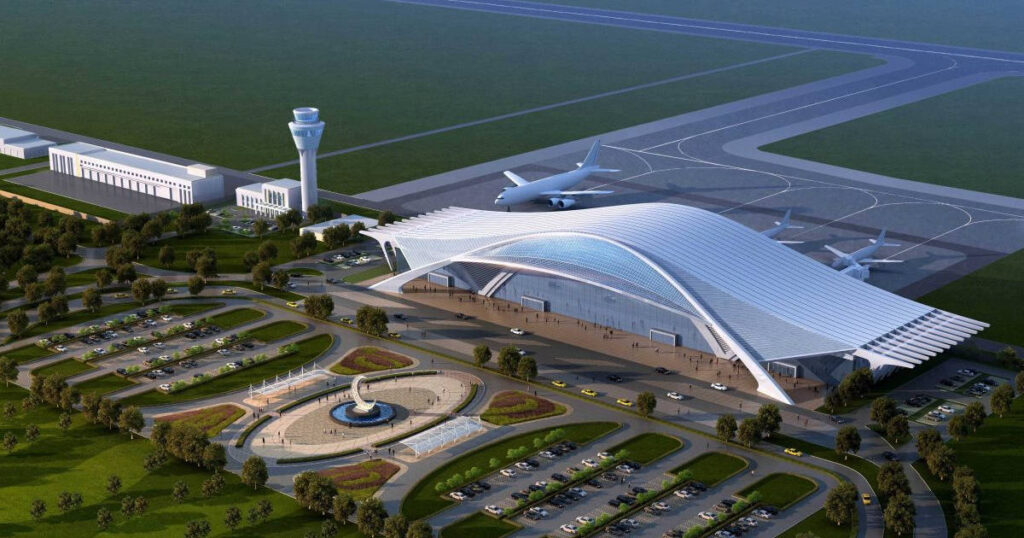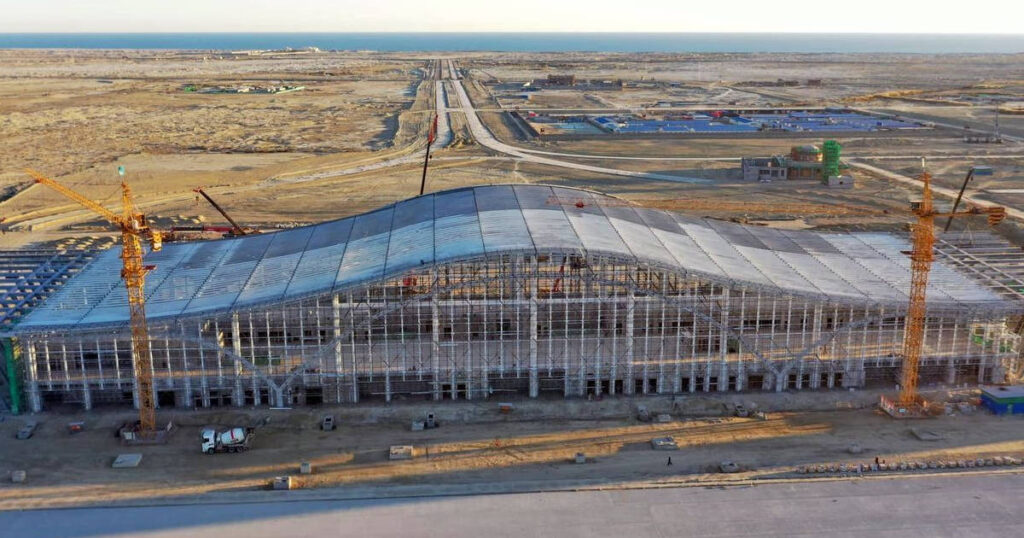




On 29 March 2019, Pakistan’s Prime Minister Imran Khan and the Chinese Ambassador to Pakistan Yao Jing laid the foundation of the ambitious New Gwadar International Airport (NGIA). Boasting an extensive area of 4,300 acres, NGIA is poised to become Pakistan’s largest airport, capable of handling Airbus A380 and Boeing 777 aircraft landings. This massive project is being financed by China through a generous grant of US$230 million and is slated for completion within three years. However, as construction progresses, concerns are mounting over the rationale behind building the country’s largest airport in a city with a population of merely 85,000.
The NGIA forms a crucial part of the China-Pakistan Economic Corridor (CPEC) initiative, a part of China’s broader Belt and Road Initiative (BRI). The CPEC aims to transform Pakistan into an economic corridor by investing in various infrastructure, energy, and industrial projects. At the heart of this corridor lies the city of Gwadar in southwestern Pakistan, which also houses the Chinese-funded Gwadar Port. The NGIA is a major CPEC project intended to complement the port’s development. However, due to operational issues, the airport’s construction faced a delay of four years.
Gwadar’s small population of 85,000 relies predominantly on fishing as its economic backbone. Already equipped with an airport known as Gwadar International Airport, the city appears to have sufficient aviation infrastructure to meet its current demands. According to the Civil Aviation Authority (CAA), Gwadar Airport served only 33,984 passengers in 2017-2018, while Karachi’s Jinnah International Airport handled 6.6 million passengers during the same period.
Mariyam Suleman, an author residing in Gwadar and a frequent air traveler, attests that the existing airport in Gwadar is adequate for the city’s requirements. She highlights that most flights from Gwadar are not even fully booked, with only one daily flight operating to Karachi. Full bookings typically occur only during CPEC-related events. The Pakistan Planning Commission estimates a modest annual average increase of 2.82 percent in air traffic demand. This suggests that NGIA may take several years to attract sufficient passengers to reach its capacity.


Comparisons are being drawn with Sri Lanka’s Mattala Rajapaksa International Airport (MRIA), which was also constructed by a Chinese firm and intended to cater to the air traffic needs of the Chinese-built port of Hambantota in southern Sri Lanka. However, MRIA became infamously known as the world’s emptiest airport, experiencing minimal passenger traffic, leading to doubts about its viability.
Afsar Malik, an aviation expert with experience in Pakistan’s Civil Aviation Authority, believes that NGIA’s land area of 4,300 acres will initially accommodate only 350,000 passengers annually after completion. He asserts that the large land area was planned for future development and expansion needs for the next century or two. Conversely, Hasaan Khawar, a public policy analyst, rebuts the comparison with MRIA, emphasizing the distinct location and scope of Gwadar’s new airport, as well as the city’s portfolio of development projects.
Afsar Malik suggests that NGIA could potentially serve as a transshipment hub, with Chinese airlines and low-cost carriers from Gulf countries commencing operations from the airport. However, Malik Siraj Akbar, a Washington-based analyst, disputes this claim, stating that outsiders have yet to be convinced about visiting or investing in Gwadar. He highlights that foreigners feel more at home in Karachi, Lahore, or Islamabad, and that Gwadar is perceived as less safe, further limiting its appeal.
Gwadar’s residents view NGIA as an unnecessary project, advocating for investments in socioeconomic upliftment instead. The majority of Gwadar’s current population relies on the fishing industry, which faces challenges due to the CPEC’s Eastbay expressway project. Therefore, airport concerns are not a priority for the locals, who mostly use bus transport when traveling out of Gwadar, primarily for medical purposes.
The Pakistani government appears to be banking on Gwadar Port’s success to generate air traffic demand for NGIA. However, Gwadar Port has not yet reached the level of success envisioned as the starting node of the CPEC. With only three berths operational, as compared to 10 at Chabahar Port and 67 at Jebel Ali Port in Dubai, Gwadar Port’s shipping activity remains limited. If the port fails to establish itself as a trade hub, NGIA’s prospects for developing air traffic demand will also be in jeopardy.


In conclusion, the New Gwadar International Airport project raises significant concerns about its feasibility and potential to attract sufficient air traffic demand. While proponents argue for its future importance and expansion possibilities, critics compare it to Sri Lanka’s underutilized MRIA. The airport’s success ultimately hinges on the development and success of Gwadar Port as a regional trade hub. As doubts persist and the local population seeks more immediate socio-economic benefits, the NGIA remains at the center of a heated debate concerning Pakistan’s development trajectory.





Please leave a message, will reply within 2 min.
Your 1 Stop Renovation Contractor